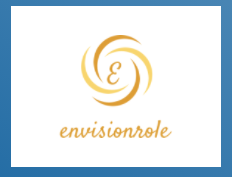Google was the first to be known for crawling links on the pages where other search engines served as web page indexes.
Google’s search algorithms are the programming equations that provide a competitive advantage.
Google algorithms are a complex system used to restore data from the search index and instantly deliver the best possible results for a query.
The search engine uses a combination of algorithms in addition to various ranking signals to deliver web pages ranked by relevance to the search engine results pages (SERPs).
Google’s algorithm is most important to the SEO strategy because it is the backdrop in case of which most searches take place.
With previous algorithms, Google focused more on keywords and search terms.
With BERT, Google ranks pages based on the topics and ideas behind search queries.
As a result, keyword stuffing is an outdated and ineffective strategy,
Therefore Content creators should focus more on providing valuable content that appeals to their target consumers.
With each algorithm, people eventually find ways to push low-quality sites to the top of search results.
Google penalties:
Penalties are different from being lower in the rankings due to a new algorithm.
Black hat vs white hat SEO:
In the world of SEO, black hat means anything that tries to fool the algorithm and get a lower quality site to rank higher.
While white hat SEO refers to optimizing a page in the right way.
On the other hand, Black hat SEO includes tactics like keyword stuffing, guest posting networks, buy links, duplicate content, and even malware.
Google continues to improve on identifying and penalizing black hat tactics.
To rank higher in Google: 7 tips to improve the position in the SERPs are
Focus on quality content:
As Google’s algorithm gets better and better at recognizing and rewarding quality content, it will be increasingly imperative that the site stays current.
Create great content by writing in detail about products and services, it is always better to focus on the customer.
Write about loan products and services through real user searches using keyword research.
Google offers a keyword planner to help.
Use title tags:
Title tags should use the primary keyword, then a secondary keyword, and the brand name.
Title tags help Google’s algorithm to categorize the site, and title tags are seen on a search engine results page (SERP).
Stay up-to-date on the algorithm changes:
With Google making so many changes to improve the algorithm.
It is essential to be aware of them to keep the site in the top positions.
Optimize URLs:
Like title tags, URL optimization helps Google rank the page and is an easy way for people to understand what’s on the page.
Use pillar pages and topic groups:
Pillar pages and topic groups are a form of site architecture that improves rankings by optimally organizing content.
Each pillar page should link to numerous specific thematic posts targeting long-tail keywords, and these posts should link to the pillar page.
Monitoring the results:
A direct way to rank higher, if don’t keep track of the results, won’t know if the changes made are working or not.
Need to keep track of things like landing page ranking, organic traffic and conversions, and bounce rate.
Start with the strategy:
All the recommendations described must be strategic.
The brand must know the Google algorithm.
Google is ready to dominate the industry for years to come.
Need to optimize the online strategy to keep the website highly rated.
Here are some key points to remember:
Create authentic and engaging content for real consumer searches.
Google’s algorithm changes frequently, but can keep up with the changes.
Don’t try to cheat the system; That is to say that Google will eventually find out and penalize the site.
